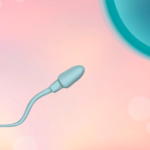There are different types of chromosome abnormalities. There are well-known abnormalities in the number of chromosomes, structural abnormalities, multiple autosomal and sex chromosome abnormalities, and abnormalities involving a combination of both.
Types of Chromosomal Aberrations
There are different types of chromosome abnormalities. There are well-known abnormalities in the number of chromosomes, structural abnormalities, multiple autosomal and sex chromosome abnormalities, and abnormalities involving a combination of both.
There are also congenital and acquired abnormalities. A congenital abnormality is an abnormality in the germ cells at the fertilized egg stage and is called chromosome aberration syndrome. Acquired abnormalities include chromosomal abnormalities caused by mutations in somatic cells due to the environment or accumulated over many years, and chromosomal abnormalities caused by tumors.

There are two main types of chromosomal abnormalities:
- Autosomal Abnormality
- Sex Chromosome Abnormality
Also, there are several types of autosomal aberrations, including the following:
- A. Abnormalities in Numbers
- (1) Aneuploid
- (2) Triploid, Tetraploid
- (3) Aneuploidy
- B. Structural Abnormality
- (1) Deletion
- (2) Ring Chromosome
- (3) Duplication
- (4) Inversion
- (5) Insertion
- (6) Homologous Chromosome
- (7) Reciprocal Translocation
- (8) Dicentric chromosome
There are three types of sex chromosome abnormalities:
- A. Abnormality in number
- B. Structural Abnormality
- C. Fragile X Syndrome
Autosomal Abnormality
A. Abnormalities in Number
(1) Aneuploid
In humans, we have a chromosome number of 46, which is 23 pairs. When a person has a chromosome number greater than 46, it is called aneuploid; an increase or decrease of one to a few chromosomes.
(2) Triploid, Tetraploid
Normal somatic cells are diploid (2n). Triploidy and tetraploidy can be seen in the fetal stage. In triploidy, the number of chromosomes (3n) makes it possible for the child to be born alive, but with 69 chromosomes, the child does not live long.
Triploidy is most often the result of two-sperm fertilization, and triploidy can also occur when diploid oocytes or sperm are formed. Triploidy from the father results in an abnormal placenta.
In addition, triploidy from the mother results in spontaneous abortion in early pregnancy. Tetraploidy results in 92 chromosomes due to the number of chromosomes (4n). When this division occurs in the sex chromosomes, it results in XXXY and XYYY, chromosomes without sex chromosomes.
(3) Aneuploidy
Aneuploidy is a clinically important human chromosome abnormality. Most children with aneuploidy have trisomy (three chromosomes instead of the normal one pair (two)). Trisomy can occur on any autosomal chromosome.
However, for chromosomes where a large number of genes are present, most cases result in miscarriage. Newborns with trisomy 21, which has a low number of genes, account for 95% of patients. Other trisomies found in newborns are trisomy 18 and trisomy 13. Less common is monosomy (having only one chromosome instead of a pair (two)). Most cases of autosomal monosomy result in miscarriage, while monosomy of the sex chromosome X is called Tumer’s syndrome and is a significant clinical condition. It is known that the cause of aneuploidy is the failure of chromosomes to separate (inseparability) during meiosis.

B. Structural Abnormality
(1) Deletion
A deletion is the loss of a portion of one of the two chromosomes, resulting in a chromosomal imbalance. Normally, both chromosomes are the same size and fulfill their functions, but when part of one of the two chromosomes is lost, the chromosome ceases to function. This is called haplo-insufficiency. This is what causes the symptoms.
The severity of the condition is determined by the number of genes in the deleted chromosome and the size of the deleted fragments.
(2) Ring Chromosome
A ring chromosome is a chromosome in which two of the two chromosomes are severed in two places, forming a ring between the two severed chromosomes. It occurs rarely, but can be found in all chromosomes.
(3) Duplication
Like deletions, duplications are caused by abnormal segregation during meiosis in the presence of unbalanced crossovers and other translocations and inversions that will be discussed shortly. Duplication is considered to have less clinical impact than deletion. Duplication of sperm or oocytes (called gametes) results in partial trisomy (chromosome imbalance). Chromosome breaks that result in duplication can also result in gene breakage and phenotypic abnormalities.
(4) Inversion
Inversion is when two breaks occur in one chromosome and the fragments are reconstituted in opposite directions. Inversions can be intra-arm, in which the two break points occur on one arm, or inter-arm, in which the break points (including the centromere) occur on both arms. Inversion does not cause an abnormal phenotype (i.e., disease) in the carrier because it is a reconstruction of an equilibrium type. However, it can cause unequal chromosome aberrations in the offspring. Among these, inversion of the small inter-arm space of chromosome 9 does not seem to pose a risk of miscarriage or unbalanced chromosome aberrations in the carrier. Therefore, it is considered a normal aneuploidy.
(5) Insertion
It is the insertion of some chromosome fragments from one chromosome into a different chromosome, either in the same orientation or in the reverse orientation. This is very rare.
(6) Homologous Chromosome
Chromosomes are formed when the arms of one chromosome become the short arm or the long arm. When one chromosome is deleted in the short arm, the other chromosome is duplicated in the long arm. This is seen in some cases of Turner syndrome, an chromosome X abnormality.
(7) Reciprocal Translocation
A break in each of two nonhomologous chromosomes in which the fragments have exchanged with each other. A break can occur in any chromosome. Since the number of chromosomes remains the same, the carrier is healthy, but the male carrier may be infertile.
(8) Dicentric Chromosome
A chromosome with two kinetochores is caused when two chromosomes are broken at the same time and the fragments containing kinetochores (spindle attachment points of chromosomes) are fused together. In addition to somatic cell division and meiosis, it is also known as a chromosome aberration caused by radiation exposure.

Sex Chromosome Abnormality
A. Abnormality in Number
Among human chromosomes, there are two sex chromosomes. The aberrations are diverse and occur at a high rate. This is caused by chromosome segregation.
B. Structural Abnormality
Structural abnormalities of the chromosome X are diverse. It is particularly well known in Turner’s syndrome. There is also a pseudoautosomal region (PAR) at the end of the short arm of the X and Y chromosomes. This PAR is not inactivated by X, and its loss has been shown to cause short stature in both females and males. There are also reciprocal translocations between X and Y chromosomes.
C. Fragile X Syndrome
Some diseases have fragile sites on the long arm of the X chromosome. It causes mental retardation and physical manifestations.
 中文
中文













